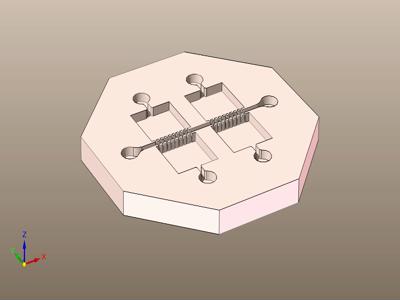The artificial production of complete three-dimensional vascularized functional organs is still a research challenge, although recent advances are opening up new horizons to the treatment of many diseases by combining synthetic and biological materials to produce portions of veins, capillaries, arteries, skin patches and parts of bones and soft organs. Counting with artificially obtained completely functional replicas of human organs will constitute a benchmark for disease management, but there is still a long way to achieve the desired results. In the meantime, counting with simple biomimetic microsystems able to mimic the behaviour of complex organs, or at least of some of their significant functionalities, constitutes a realistic and very adequate alternative, capable of providing even better results than more conventional animal models. These simplified replicas of human organ functionalities are being developed in the form of advanced lab-on-chip devices generically called “organs-on-chips”, by combining the aforementioned strategies and technologies, and are already providing interesting results. Most of the already developed organs-on-chips in fact focus on specific interactions among a couple of cell types cultured together, help to assess the effect of chemicals and drugs on cells cultured upon channel networks resembling the organization of more complex organs, mimic concrete fluid-cell interfaces or imitate the interactions between several organs or, at least, cell types.
Present project illustrates the development of a multi-organ metastasis-on-chip biomedical device, for modeling and studying tumoral process and their invasive potential, based on a novel design with some special features different from previous studies. Our approach differs from the more typical organ-on-chip designs inspired on Transwell® permeable culture supports. Transwell® devices include lower and upper culture chambers, for culturing different cell types, separated by micro-porous membranes, and provide effective solutions for co-culture of cells. However, in the conceptual design presented here, cells are cultured on the same layer, connected to a vascular channel and separated from it by micro-manufactured gates, thus simplifying device complexity and providing similar functionalities, using just one culture layer and an upper case, instead of two culture layers and an intermediate membrane. We think that similar designs may promote mass production of organ-on-chip solutions and lead to more economic devices.

Medical tags
- Clinical need
- Support to laboratory practice
- Area
- Cellular pathology
- Technology
- In vitro diagnostic device
- Project keywords
- Metastasis